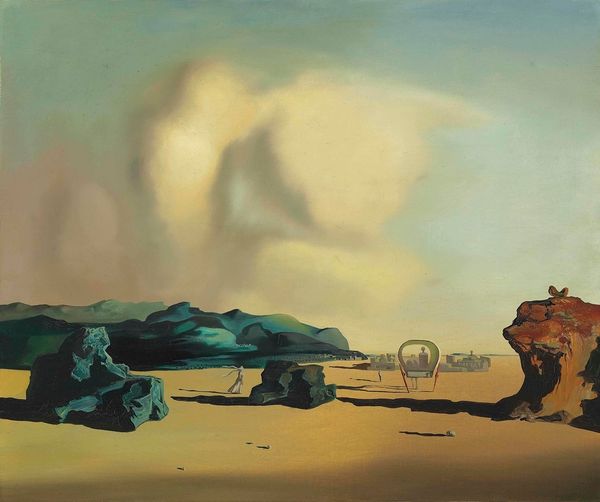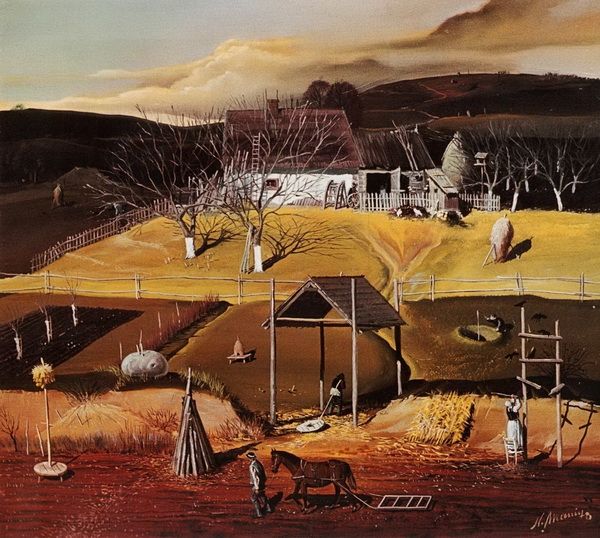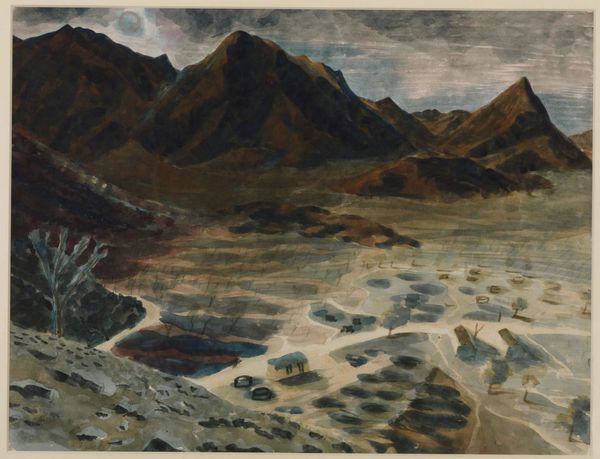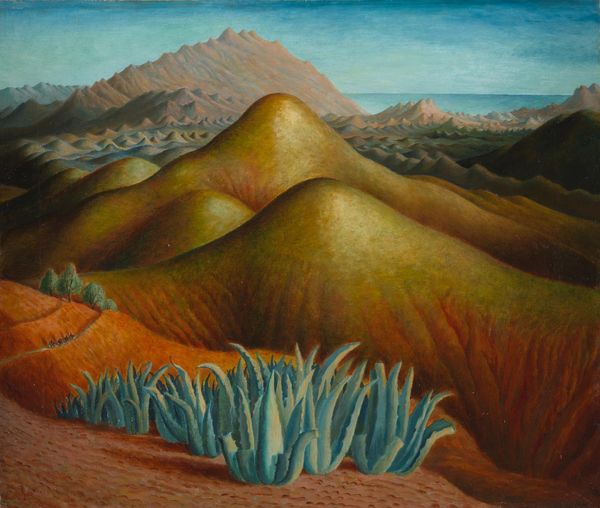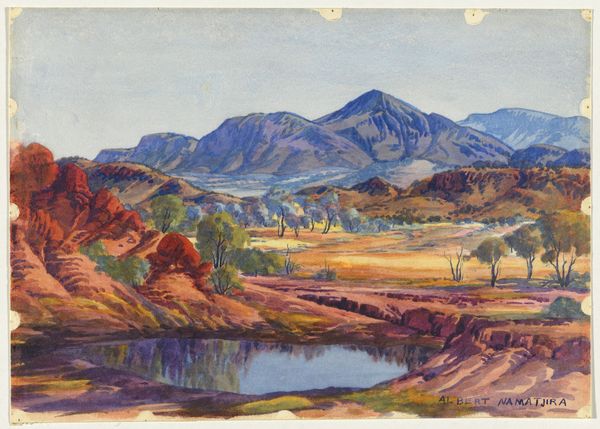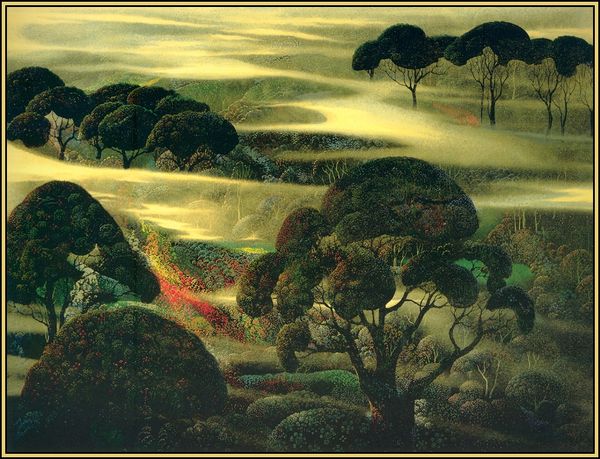
tempera, painting, oil-paint
#
tempera
#
painting
#
oil-paint
#
landscape
#
classical-realism
#
figuration
#
oil painting
#
genre-painting
#
realism
Copyright: Public domain
Curator: Winifred Knights painted "Santissima Trinita" in 1928. It's rendered in tempera and oil paint. At first glance, what stands out to you? Editor: The pervasive sense of stillness is almost unnerving. There's a strange contrast between the idyllic landscape and the figures who appear to be either sleeping or… well, it’s hard to say, isn’t it? There is a kind of post-pastoral bleakness here. Curator: Yes, that’s astute. Knights spent time in Italy in the 1920s. And, culturally, there was growing interest in religious themes, which experienced some interesting stylistic transformations during that interwar period. We have these simplified forms and muted colors reminiscent of early Renaissance frescoes, but imbued with modern sensibilities. Editor: Precisely. It is not a glorification. The title, of course, invokes the Holy Trinity, but the figures seem disconnected, almost alienated from one another and from any sense of divinity. The bodies are not individualized. I wonder if the piece speaks to the trauma and displacement in the aftermath of World War I. Are we looking at a meditation on loss? Curator: It is a fitting proposition. Art critics have viewed Knights' artistic circle during the interwar period in connection with larger societal forces; and these devastated demographics after World War I had left many looking to different ideologies or beliefs, questioning their relationship with existing religious institutions. Perhaps this artwork can be regarded as evidence for this trend. Editor: And that banner—the standard—that pierces the field adds to that uncertainty. It could be interpreted as religious, patriotic or even a commercial symbol. The ambiguity resonates, even now. This seems like Knights uses that visual uncertainty to mirror that sociopolitical uncertainty. Curator: Right, those competing and simultaneous cultural valences are so striking to me. The controlled color palette is striking; the overall lack of vibrance somehow reflects a pervasive lack of energy throughout Western society. Editor: "Santissima Trinita," for me, is more than a depiction; it's a quiet, yet potent critique. It’s about more than faith; it’s about social order, collective grief, and, maybe, a flicker of hope somewhere. Curator: I agree. Its unsettling beauty lingers, doesn't it?
Comments
No comments
Be the first to comment and join the conversation on the ultimate creative platform.
